Digital Poster
MRI Safety
ISMRM & ISMRT Annual Meeting & Exhibition • 10-15 May 2025 • Honolulu, Hawai'i

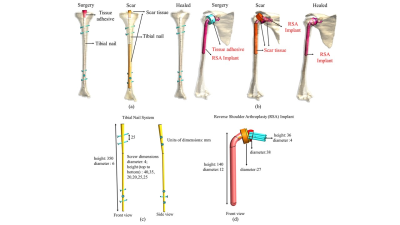 |
Computer Number: 145
3955. Effects
of RF-Induced Heating on Stages of Bone Fracture Healing : In
Silico Study at 1.5 T and 3.0 T MRI
A. Nandikanti, J. Zheng, S. Long, J. Chen
University of Houston, Houston, United States
Impact: This study highlights the critical need for
evaluating RF-induced heating in orthopedic implants across
various bone fracture healing stages, emphasizing the
importance of in silico simulations using multiple human
models to ensure MRI safety for patients with passive
implants.
|
|
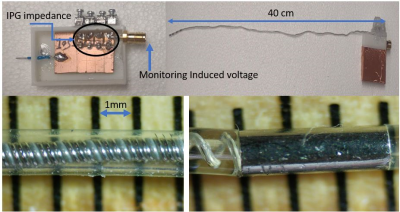 |
Computer Number: 146
3956. Effects
of Implantable Pulse Generator (IPG) Impedance on the MRI
Conditionality of Active Implantable Medical Devices (AIMDs)
under 1.5T MRI
F. Ebrahimi, J. Zheng, Q. Wang, H. Jeong, A. Kumar, J. Chen
University of Houston, Houston, United States
Impact: This study emphasizes the significance of on the
RF-induced voltage at the IPG in addition to heating at the
distal end. The analysis method presented could serve as a
valuable approach for assessing the interchangeability of
IPGs for AIMDs.
|
|
 |
Computer Number: 147
3957. Generating
an EM Simulation Model of a Clinically-Used RF Head Coil at 7T
D. Özkara, İ. Yazıcı, E. Mahmoudalilou, S. Brunheim, L.
DelaBarre, T. Stoecker, Y. Eryaman, E. Atalar
Bilkent University, Ankara, Turkey
Impact: The simulation model developed for the 7T Nova
coil showed promising results to estimate fields inside
different phantoms. The model could improve research areas
involving the Nova coil such as high-permittivity materials,
implant safety, RF coils, and pTx pulse design.
|
|
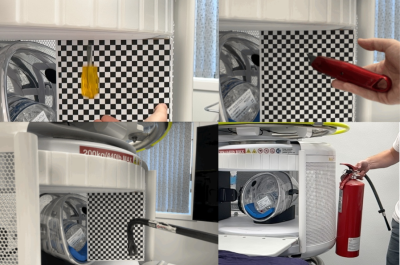 |
Computer Number: 148
3958. Point-of-Care
MRI vs Loose Ferromagnetic Objects
M. Poole, F. Yang
Hyperfine, Inc., Guilford, United States
Impact: This work establishes a method to measure and
simulate forces to quantitatively and qualitatively
understand the risks of loose ferromagnetic objects near
point-of-care MRI systems. This should help operators manage
risk and optimize working procedures with point-of-care MRI
systems.
|
|
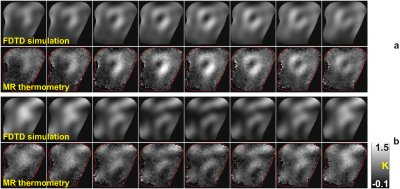 |
Computer Number: 149
3959. Accurate
assessment of 11.7 T head coil energy deposition using
field-drift tolerant proton resonance frequency-based MR
thermometry
J. de Zwart, P. van Gelderen, J. Murphy-Boesch, J. Duyn, N.
Gudino
National Institutes of Health, Bethesda, United States
Impact: A state-of-the-art method for high-field
transmit coil performance assessment is presented:
High-accuracy FDTD simulation of SAR deposition from a 500
MHz human head coil was validated using a robust MR
thermometry method, based on an internally-referenced
phantom material.
|
|
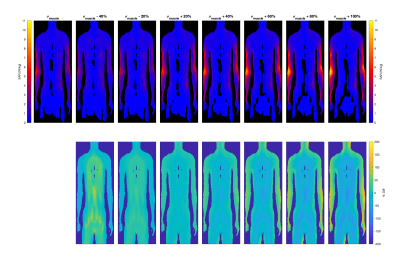 |
Computer Number: 150
3960. The
impact of tissue dielectric property uncertainties on MR safety
assessments: a study of muscle conductivity variations
F. Muñoz, X. Chen, Y. Hamamura
University of Southern California, Los Angeles, United States
Impact: This study highlights the importance of using
accurate tissue dielectric properties in MR safety
simulations. It encourages further research into tissue
property variation and their impact on important safety
metrics.
|
|
 |
Computer Number: 151
3961. Modeling
Factors Affecting SAR Distribution in UHF MRI: Mesh Density,
Body Scaling, and Simplification of the Models
F. Jabbarigargari, M. Terekhov, L. Schreiber
Comprehensive Heart Failure Center, University Hospital Wuerzburg, Wuerzburg, Germany
Impact: This study discusses how body modeling in EM
simulations impacts the SAR at UHF MRI.
|
|
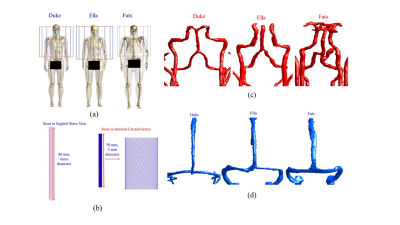 |
Computer Number: 152
3962. In
Silico Trials On RF-Induced Hazards For Patients With Cerebral
Stents Exposed to 1.5 T and 3.0 T MRI
A. Nandikanti, G. Shen, J. Zheng, S. Long, J. Chen
University of Houston, Houston, United States
Impact: This study highlights the importance of
patient-specific in silico simulations to accurately
predict RF-induced heating in cerebral stents
during MRI. It demonstrates how anatomical variations, stent
placement, and surrounding tissue properties influence
heating, crucial for ensuring patient safety.
|
|
 |
Computer Number: 153
3963. Towards
Developing Device Testing Methods in Low-Field MRI: Electrical
Properties in Tissue-Mimicking Media at 0.5T
J. Martinez, S. Ogier, S. Russek, K. Keenan
National Institute of Standards and Technology (NIST), Boulder, United States
Impact: This work demonstrates the importance of
matching electrical properties for device testing at 0.5T
MRI. The study proposes a modified ASTM gel formulation for
performing accurate device safety assessments at this field
strength.
|
|
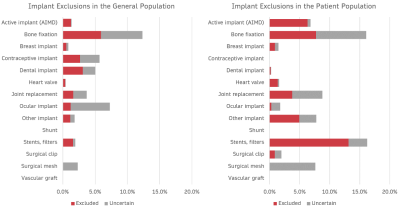 |
Computer Number: 154
3964. Implant
Screening Processes of UK 7T Sites
C. Evans, S. Allwood-Spiers, D. Bates, P. Bridgen, J.
Campbell, A. Cooper, A. Cooper, E. Kopanoglu, V. Lupson, J.
Paul, A. Peters, S. Rieger, J. Zenilman, A. Hess
Cardiff University, Cardiff, United Kingdom
Impact: A lack of safety testing at ultra-high field
denies access to patients with implants. The exclusion rate
was estimated to be 40% for a patient population,
highlighting which implants will be most impactful to
improve access.
|
|
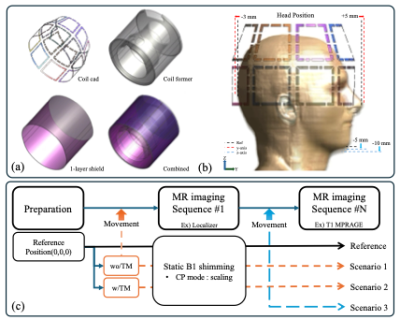 |
Computer Number: 155
3965. Simulation
of SAR and B1+ homogeneity change with subject movement using
16ch transceiver coil at 7T
D. Kim, K-N Kim, C. H. Moon
University of Pittsburgh, Pittsburgh, United States
Impact: Estimation of B1+ and SAR changes by subject
motion would improve scan safety as well as B1+ shim
approach.
|
|
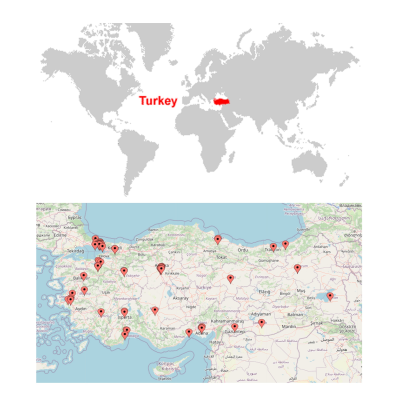 |
Computer Number: 156
3966. Addressing
the knowledge gap in MRI physics in Türkiye: A continuing
educational initiative by the Turkish Medical Physics
Association
J. Weygand, T. Toksay, J. Fajemisin, G. Güngör, T. Salzillo,
B. Musall, K. Michel, J. Bryant, P. Mhatre, H. Hu, W.
Swanson, P. Sandwall, G. Ӧz, S. Einstein, E. Göksel
Dartmouth College, Hanover, United States
Impact: The number of MR scanners in Türkiye recently
increased rapidly without an associated expansion of MR
education. The Turkish Medical Physics Association
identified this gap and collaborated with international
experts to create a webinar series that quantitatively
increased participants' knowledge.
|
|
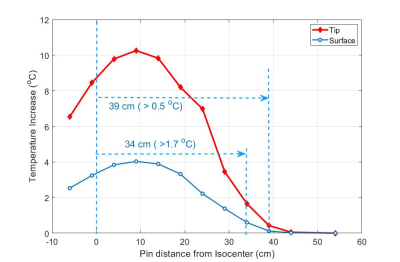 |
Computer Number: 157
3967. The
MR safety scan condition requiring for the external fixator to
stay outside the scanner bore should be revised
S. Yee, A. Takahashi, J. Borgida, T. Ly, J. Husseini
Massachusetts General Hospital, Boston, United States
Impact: The results of this study strongly suggests the
patients with external fixator, who have often been
prevented from getting MRI scans, could be allowed to get
MRI scans, if the external fixator is at certain distance
away from the isocenter.
|
|
 |
Computer Number: 158
3968. Implant-Friendly
RF Excitation Solutions for Patients with Bilateral DBS
Electrodes
N. I. H. Zulkarnain-Lemke, A. Sadeghi-Tarakameh, J.
Thotland, N. Harel, Y. Eryaman
University of Minnesota, Minneapolis, United States
Impact: We demonstrated a fast, patient-specific
optimization workflow to improve the safety of MRI scans for
DBS patients. The workflow is efficient enough to be
seamlessly integrated into routine imaging procedures before
the main study scan.
|
|
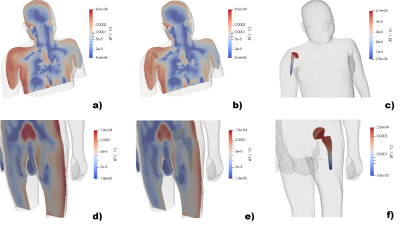 |
Computer Number: 159
3969. Safety
assessment of MRI workers carrying orthopedic implants
L. Zilberti, A. Arduino, O. Bottauscio, S. Busoni, V.
Camisa, V. Cannatà, N. Oberhofer, D. Origgi, U. Zanovello
Istituto Nazionale di Ricerca Metrologica, Torino, Italy
Impact: This quantitative assessment indicates that the
incremental risk due to the presence of bulky conductive and
nonmagnetic orthopedic implants in the body of MRI workers
is negligible. Hence, there is no reason to prevent them
from entering the MRI room.
|
|
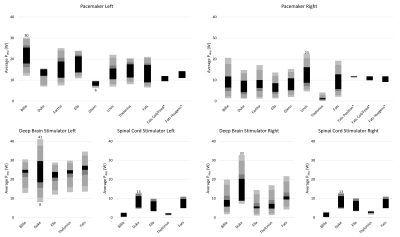 |
Computer Number: 160
3970. Impact
of RF Coil Topology on Population Studies of RF Heating of
Leaded Active Implants During MRI
T. Goren, N. Kuster
IT'IS Foundation, Zurich, Switzerland
Impact: The sensitivity evaluation of Tier 3 studies to
birdcage topology and simulation parameters indicates that
at 3T, the birdcage topology does not contribute significant
variation to Tier 3 applications compared to factors such as
patient anatomy, imaging landmarks, and shimming.
|
The International Society for Magnetic Resonance in Medicine is accredited by the Accreditation Council for Continuing Medical Education to provide continuing medical education for physicians.